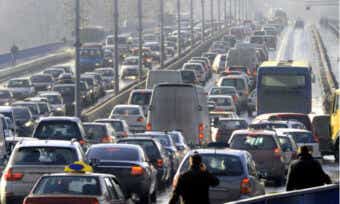Car insurance for hail damage
The table below shows car insurance policies from Canstar’s Online Partners which include an option for hail cover.

Instantly compare 60+ Canstar expert rated policies based on the inputs below
24/7 Phone & Online Claims.
Budget Direct - Insurance Solved.
Increasing Your Basic Excess (Within A Given Range)*
Lodge A Claim Online 24/7
• Flexible monthly policies with no exit fees
• Lodge a claim online 24/7
Showing 8 of 51 results
To see more results adjust the filters above
Unsure of a term in the above table? View glossary
The initial results in the table above are sorted by Star Rating (High-Low) , then Provider Name (Alphabetical) . Additional filters may have been applied, see top of table for details.
SPONSORED
-
New Car Replacement within the First Two Years. T&Cs apply
-
Feel confident you’re covered for theft.
-
24/7 Roadside Assist included in comprehensive. Exclusions, limits, T&C’s Apply.
-
Never worry with accidental damage included.
-
Drive happy knowing your car’s covered against storm, hail and flood damage.
About hail damage car insurance
Hail can be incredibly destructive to cars, and without hail damage car insurance you could be left seriously out of pocket when a hailstorm strikes.
Severe storms can whip up surprisingly quickly, and when they bring hail, the damage to a car that’s out in the open can be severe.
In Australia, hailstones can sometimes be bigger than a cricket ball, and the Bureau of Meteorology says when hail reaches that size it can hit the ground at more than 200 kilometres per hour, with enough force to break roof tiles.
So it’s fair to say hail has the potential to do some serious damage to your car.
Getting caught on the road during a hailstorm – or knowing your car is parked in the open and about to be pummelled by hail – can be extremely stressful. Australia is likely to experience more frequent, and potentially more severe, hailstorms in the future, according to an international study led by a UNSW Sydney researcher.
This makes it important to know if you have hail damage car insurance.
You can use the table at the top of this page to compare policies that offer the option of hail insurance. Change the filters to suit your requirements.
Frequently Asked Questions
Latest in car insurance
Canstar Star Ratings and Awards
Looking for an award-winning product or to switch providers or brands? Canstar rates products based on price and features in our Star Ratings and Awards. Our expert Research team shares insights about which products offer 5-Star value and which providers offer outstanding value overall. We also reveal which providers have the most satisfied customers in our dedicated Customer Satisfaction Awards.
About our car insurance experts
Nina Rinella, Editor-in-Chief

Joshua Sale, Group Manager, Research & Ratings

As Canstar’s Ratings Manager, Josh Sale is responsible for the methodology and delivery of Canstar’s Car Insurance Star Ratings and Awards. With tertiary qualifications in economics and finance, Josh has worked behind the scenes for the last five years to develop Star Ratings and Awards that help connect consumers with the right product for them.
Josh is passionate about helping consumers get hands-on with their finances. Josh has been interviewed by media outlets such as the Australian Financial Review, news.com.au and Money Magazine.
You can follow Josh on LinkedIn, and Canstar on Twitter and Facebook.
Thanks for visiting Canstar, Australia’s biggest financial comparison site*
Important information
For those that love the detail
This advice is general and has not taken into account your objectives, financial situation or needs. Consider whether this advice is right for you.
















